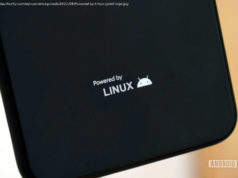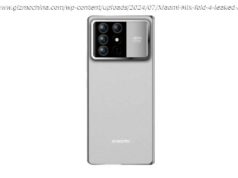Hands on: Yes, it’s still a prototype, but this Oculus standalone headset feels like the future of virtual reality.
Update: F8 2018, Facebook’s big developer conference, came and went in early May without Project Santa Cruz releasing into the wild, likely to the disappointment of many hoping for details on the powerful wireless VR headset.
But hopefuls weren’t left empty handed as Facebook CTO Mike Schroepfer offered two substantial teases on the headset. First, he revealed that Project Santa Cruz is currently in the hands of third-party developers. Second, he said Facebook will have «exciting updates» about Project Santa Cruz to share later this year.
«Later this year» lines up with the annual Oculus Connect conference, which usually goes down in October.
Is it then that the Project Santa Cruz release date will finally be revealed? It appears that could very well be the case.
Original hands-on review continues below:
Project Santa Cruz is a new standalone headset from Oculus, makers of the well-known (and tethered) Oculus Rift virtual reality (VR) headset.
Alright, the headset isn’t actually new. Facebook first announced it was working on Project Santa Cruz, which doesn’t require a PC or phone to operate, during last year’s Oculus Connect developers conference.
At this year’s Connect conference, however, we were treated to a far more refined prototype. What’s more, we have a release time frame for developers of early 2018.
We got to try the latest Project Santa Cruz prototype for ourselves during this year’s Connect in San Jose, California. No photos or video were allowed, so we can’t show you what the headset in its current form looks like exactly, but we got 15 minutes to experience the VR on offer from the next-gen headset. From our short time with Santa Cruz, it looks mighty promising.
Project Santa Cruz looks and feels similar to the current Oculus Rift, with a few key exceptions.
Santa Cruz has slightly rounder edges around the visor than Rift, and there are four sensors embedded in each corner for inside-out tracking, which means no external cameras or sensors are required. Everything is contained in the headset, including all the components that run the VR experiences.
Santa Cruz is a bit heavier in the front than Rift, though far from uncomfortable to wear. We actually noticed the weight more while holding the headset than when we wore it. The headset was relatively easy to slip on and take off, which can’t always be said about Rift.
The headset portion has a soft, cloth-like quality that feels good in the hand. The straps that go behind your head are made of a stretchable rubber material. This is a break from the more rigid plastic straps found on Rift.
Project Santa Cruz’s straps stretch to go around your head before snugly cradling it. The whole contraption is secure as you move around the VR world, with no slippage. It feels akin to wearing a well-fitting hat.
Again, Project Santa Cruz is a prototype, so everything from its parts to its design is subject to change. But pending a little more refinement – it still looks like a prototype and not a finished product – we can see Project Santa Cruz hitting the market in close to its current form.
One welcome feature of Santa Cruz is that there are no headphones to flip over your ears, as is the case with Rift. The sound is integrated into the headset, allowing you to hear clearly what’s going on in the room around you while not losing the sense of presence in the experience.
The sound has an all-encompassing quality as it emanates from the headset, and we were drawn into the VR worlds in a way we’ve never quite experienced with Rift.
We tried two demos with Project Santa Cruz. These gave a good sense of the headset’s capabilities, though didn’t match the more intense games we’ve played on Rift. In that sense, it’s difficult to do an apples-to-apples comparison. Still, the experiences were smooth, and though there was a slight granular quality to the graphics, these were also crisp.
The first demo was called Boundless. We were tasked with feeding a creature named Bogo, a cute dog-like dragon. The creature came up to us when we offered it pieces of fruit, and ate from our hands. We plucked the fruit from trees using the Project Santa Cruz controllers. Later, we played fetch with Bogo, chucking a digital stick across a whimsical landscape.
Boundless was a cute and fuzzy world, one that we could explore thanks to the absense of a thick cord connecting Santa Cruz to a PC. When the demo first started, we kept ourselves confined to the limited space we’re used to with Rift. But after stepping outside this arbitrary zone, we realized we could crouch, bend and move around completely unrestricted.
This freedom was even more pronounced in our next demo, called Timestall. We basically had to fend off robot invaders and bat away various debris before either reached a friend who was in cryogenic sleep, or destroyed his life support.
In this demo, we really flew around the room. We leapt over a crack in the floor and swung our arms to push objects and robots out of the way. We dodged, swatted and jumped without the fear of getting tangled in a wire. It was liberating, and a whole lot of fun.
We’ve often caught ourselves somewhat frustratingly pushing the wire attached to Oculus Rift out of the way. Because you’re tethered to another object, you’re limited to a confined range of motion. With Santa Cruz, the room is literally your playground, and you’re free to move around as you please.
And in case you were wondering, yes, Santa Cruz has a chaperone system. A blue grid wall appears when you reach the boundaries of the space, and this kept us from venturing too close to any real world objects. Thanks to the chaperone, we felt free to move around without any added worry.
Project Santa Cruz doesn’t come alone. It also features a new set of controllers. Think of these as Oculus Touch 2.0.
The Santa Cruz controllers are smaller than Touch, and fit more comfortably in the hand. While they initially felt almost too small, you forget you’re using them after awhile, which seems like a good thing.
Whereas Touch has an analog stick and ABXY big buttons on the top, Project Santa Cruz’s controllers do away with these and replace them with a trackpad. Unfortunately, our demos didn’t include using the trackpad and only relied on the grip and trigger buttons, so we didn’t get the full effect of using the new controllers.
The Santa Cruz controllers were more responsive than Touch, and that’s likely thanks to the integrated six-degree-of-freedom, of 6DOF, tracking. This makes it so the controllers are more accurate at tracking your hand movements, which they have to be as you move around more freely in VR.






